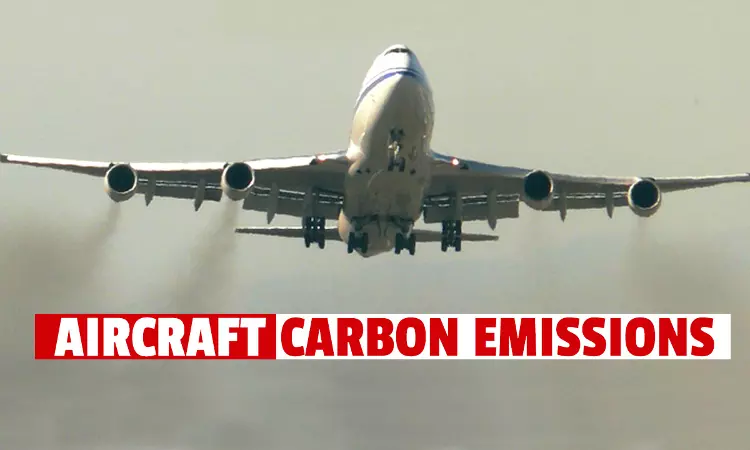Regulatory Framework To Deal With Carbon Emissions From Aircrafts
Saksham Bhardwaj
14 July 2023 11:14 AM IST

When persons across the globe are gasping for clean air to stuff their lungs in order to get the spell of life, it becomes important to deal with the issue of carbon emission from aircrafts with utmost precision. The amplitude of choice made by flyers in terms of opting air travel as most convenient mode of transport, may kindle distress among environmental campaigners. The augmented air activity may lead to increase in air pollution significantly owing to carbon discharge. It was observed that aviation contributes around 2% of worldwide Co2 emissions.[1] There is no dearth of international instructions to deal with such situations but it is felt that there is hardly any observance of the rules treasured in them. We need to explore ways to save the interest of mother earth and accordingly can satisfy the thirst of torch bearers of clear sky.
Major aspects of aviation pollution were highlighted in Special Report on Aviation and the Global Atmosphere which was prepared at the request of ICAO (International Civil Aviation Organization). It interalia provides that “aircraft emit gases and particles which alter the atmospheric concentration of greenhouse gases, trigger the formation of condensation trails and may increase cirrus cloudiness, all of which contribute to climate change; and that aircraft are estimated to contribute about 3.5 per cent of the total radiative forcing (a measure of change in climate) by all human activities and that this percentage, which excludes the effects of possible changes in cirrus clouds, was projected to grow.”[2] It gives a glimpse of how adversely air transport can impact the atmosphere.
The mammoth of carbon emission has been one of the chief causes behind the motivation of drawing various international accords to curb this disorderly situation. There were deliberations at the global level, which were incorporated into several strategic documents, with a vision to deal with the issue of climate deterioration caused by airborne planes. The very first conference (United Nations Conference on the Human Environment ) took place in 1972, at Stockholm, with a purpose to address environment concerns including air pollution.[3] Then, first edition of Annex 16 (Environmental Protection), Volume IV (Carbon Offsetting and Reduction Scheme for International Aviation) i.e. CORSIA was adopted by ICAO Council on 27th June 2018[4] with a defined purpose “to reduce emissions from international aviation, minimizing market distortion, while respecting the special circumstances and respective capabilities of ICAO Member States.”[5] ICAO has even designed Model regulations dedicated to develop a governing structure for monitoring, reporting and verification (MRV) of CORSIA by its member States in keeping with Volume IV of Annex 16.[6] Principally, CORSIA pitches for carbon balancing with a view to quell its hazardous effects.
ICAO’s LTAG (Long Term Aspirational Goal) primarily aims at net zero carbon emission by 2050 in nexus with UNFCCC (United Nations Framework Convention on Climate Change) Paris Agreement’s temperature goal.[7] Recently, Ministry of Civil Aviation (India) at Roundtable High Level Discussion at ICAO Global Implementation Support Symposium 2023 opined that “In achieving the net zero LTAG goal by 2050, ICAO should continue to be guided by Common but Differentiated Responsibilities.”[8] It certainly reflects India’s conviction to realize global goal by all possible means. The States must thrive to realize the target of carbon neutrality by 2050 in keeping with the spirit of Paris Agreement.
Kyoto Protocol (adopted in 1997 and came into force in 2005) calls for reducing or limiting greenhouse gases from "aviation bunker fuels" while working through ICAO (Article 2.2 of the Protocol).[9] It treats international and domestic emissions on different scale w.r.t. developed countries.[10]
There is an emerging need to suggest replacement of fossil fuel with substantial aviation fuel (SAF) like synthetic fuels, hydrogen and biofuels.[11] It may raise capex of the concerned government due to modalities involved but we need to proceed ahead for the greater good. Also, shifting towards fuels with the base of ethanol etc. will be environmental friendly step. Our aim of de-carbonization will not remain far-fetched as long States are willing to adopt different strategies to make this happen. Certainly, by subscribing to various policy of reducing carbon emissions, we are marching towards green transition, which will culminate into reality only if deeper cooperation from all stakeholders is achieved. Even, formulation of a Drone strategy with a goal to reduce fuel consumption in air space will be advantageous if it can somewhat substitute the role of planes since drones are battery operated. Moreover, optimal use of aircrafts will diminish the havoc caused by increased air pollution levels. We may think of shifting towards alternatives like solar energy, hydrogen and electricity run planes.
Given all this, it is imperative to bring out well thought-out legislation in each nation to curb the menace caused by such carbon release. Experts must come forward with plausible suggestions and become vocal about mechanism to rein the emission of such environment damaging substance. Immediate remedial measures needs to be invoked in order to mitigate the loss causes to the environment so far. One should revisit the existing regulations to identify loopholes. A dedicated set of guidelines at municipal level is required to keep a vigil over dangerous level of efflux of carbon. Stringent policies are needed to vanish the ill-effect of emissions from Planes by controlling the remit of loss caused to the nature by toxic discharge. It is undeniable that the Aviation regulations may look like stringent in nature but we have to live with it in order to further human ends on this planet.
The author is an Aviation Lawyer, Author and Editorial Board Member of Indian Review of Air and Space Law at Maharashtra National Law University Mumbai. Views expressed are personal only.
[8] https://economictimes.indiatimes.com/industry/transportation/airlines-/-aviation/india-has-set-a-target-of-achieving-net-zero-by-2070-civil-aviation-secretary-rajiv-bansal/articleshow/100658336.cms?from=mdr
[9] https://www.icao.int/environmental-protection/Pages/act-global.aspx#:~:text=The%20Kyoto%20Protocol%20treats%20international,while%20domestic%20aviation%20emissions%20are
[10] Ibid.


